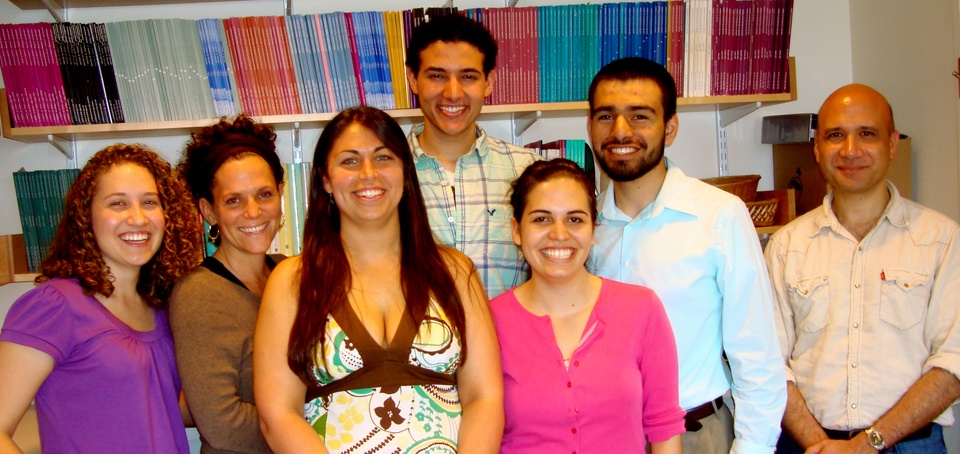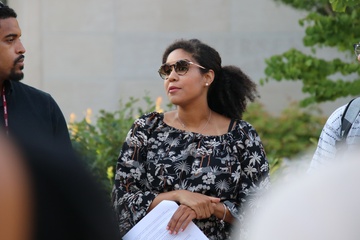It is 7:00 a.m. on a Thursday morning in 2008, and while the rest of campus is just waking up, several Harvard students—along with two faculty members—are in a minivan on their way to the Massachusetts Correctional Institution at Norfolk. They make this journey once a week: the one-hour drive is followed by a check-in process, after which they are finally able to meet up with the rest of their classmates and begin discussing the week’s readings.
The Prison Studies Project was founded at Harvard University in 2008 by professors Kaia Stern and Bruce Western. According to the project’s website, its goals are to “promote informed conversation about the challenges of mass incarceration” and to “awaken the broadest possible public to the ways we punish, and to reimagine justice in the United States.” The project launched with a class called “Race, Poverty, and Community Justice,” offered jointly to Harvard students—both from the College and graduate schools—and to incarcerated students enrolled in Boston University’s Metropolitan College. Classes associated with the project took place from 2008 to 2014 in both MCI-Norfolk, a men’s facility, and MCI-Framingham, a women’s facility.
“It was wildly different than any other class I’ve taken,” Catherine M. Sirois ’10 says.
***
Albert J. Maldonado, an alumnus of the Divinity School, vividly recalls a preliminary meeting for “Ethics, Punishment, and Race,” the 2013 iteration of the class taught by Stern. The class garnered far more interest than its structure could support; as part of the application process, Stern had each student introduce themself and explain their motivation for wanting to participate.
Five years later, Maldonado still remembers one student’s statement: “I’ll never forget what he said—he said, ‘I am a prosecutor in Los Angeles. I prosecute, convict people of crimes and send them to prison. And I do it all the time. And I have never stepped foot into a prison. I don’t know what it looks like. I don’t know what it smells like. I don’t know what the conditions are there. Nothing. And I feel that it is my moral obligation to learn more about where I am sending these people before I [continue to] send them there.’ And I thought, ‘Damn!’”
The prosecutor was Miguel T. Espinoza, who was enrolled at the Kennedy School student at the time. “Prosecutors usually are precluded from speaking to defendants or suspects in cases,” he explains. “My classmates were willing, thankfully, to discuss with me the way that the system was impacting them.”
For the first time, Espinoza got to hear about the “simple things” in his classmates’ lives: “What they did when they got up, how they spent their hours during the day, the types of food that they ate, the access—or lack of access—to work and educational opportunities… I had never been able to have conversations like that.”
Among Espinoza’s and Maldonado’s classmates was Pony Holmstrom, who was then two semesters into college classes offered at MCI-Framingham by the Boston University Prison Education Program. She was one of six students handpicked by the program to participate in the class.
Holmstrom says she found the class extremely meaningful. “I think for the first time in my life, I’d been challenged academically,” she says. “And I found that I could rise to the challenge, which was a great thing to learn about myself.”
Professor Stern, or Kaia as she was known to the students, “worked really hard to ensure that we were all humanized to one another, that the Harvard students coming in could get a feel of who we were, that we weren’t just prisoners,” Holmstrom says.
Stern would start each class by going around in a circle and inviting each student to share a challenge or a success from the past week of their lives. “It was a really nice way to allow us all to get to know one another, warm things up, so that we could learn, you know?” Holmstrom says.
Espinoza agrees. “When we were in the classroom, we were classmates,” he says. “We could have truly open and candid conversations… everyone was on equal footing and was able to equally contribute.”
***
When the class ended, students’ paths diverged. Lauren E. Faraino ’13 reflects, “It’s amazing to me that on the one hand, one of us was going to leave the classroom and a few months later have a degree from Harvard, and the other person was going to continue to serve their sentence and hopefully be released in the next few years.”
After completing the class, Holmstrom continued to serve her sentence at MCI-Framingham. During the four and a half years she was incarcerated, she took other classes through the Boston University Prison Education Program and earned a 3.98 GPA. She also worked two jobs at the prison, one in construction and the other in maintenance; her duties included making electrical and plumbing repairs.
In 2014, Holmstrom was released. “The first two years were really great,” she says. “I was really fortunate in that I had a fair amount of trade skill—I’ve done a lot of trade work in my life—so I was able to get work really quickly and I was doing a lot of speaking work for Harvard”—including a few events with Stern—“and Lasell College and other area schools.”
But then, work started to dry up. “For the last two years I’ve had a really hard time finding gainful, lasting employment, and that’s kind of thrown me into a bit of tailspin… Since my release from prison I’ve found that everything from housing to employment to education has been—there’ve been major roadblocks.” She is conscious that the problem is much bigger than just herself, observing that society’s attitude towards formerly incarcerated people has placed additional obstacles in her everyday life. “You know, this can be a life sentence,” Holmstrom said. “You had your punishment, but the punishment doesn’t stop.”
Many of Stern and Western’s former students at Harvard, meanwhile, cite the class’s influence not only on their perspectives, but also on their career choices.
Faraino, who took the class as an undergraduate, says the course influenced her decision to go to law school. She received her law degree in 2016 from the University of Chicago. “I used what I learned in the course to apply to pro bono cases,” she says.
Faraino recently served as part of a legal team working on the case of Rodricus Crawford. Crawford, who is African-American, was sentenced to death in a Louisiana court cited by Supreme Court Justice Stephen G. Breyer as imposing a disproportionate number of death sentences. The prosecutor, Dale Cox, at one point publicly said he wanted Crawford to undergo “as much physical suffering as it is humanly possible to endure before he dies.” Cox earned a national reputation when he said, "I think we [the state of Louisiana] need to kill more people.”
Faraino’s team was ultimately successful in overturning Crawford’s conviction. He is now a free man.
Faraino says the Harvard course “allowed me to go into [Crawford’s] case with a much more empathetic view than simply writing out the legal arguments that I needed to go through.”
Maldonado now practices municipal law in California and estimates that state prosecution work comprises roughly 10 percent of his job. Now, whenever he has prosecutorial discretion to decide whether to require someone to pay a fine or do community service as opposed to serving some time in jail, he says, “I always, always, always defer to the fine or the community service, because, you know, I have been into a prison… I don’t want to send them to a place like that.”
The classes stopped running in 2014 due to a lack of funding.
University spokesperson Tania deLuzuriaga wrote in an email, “Harvard students and faculty currently support a variety of prison education programs. These efforts are continuously evolving.”
This spring, for the first time, Harvard hosted a conference to discuss prison education; Stern was one of the featured speakers. PBHA also harbors a program called HOPE (Harvard Organization for Prison Education and Reform), which tutors in local correctional facilities and leads various on-campus advocacy efforts.
Faraino believes Harvard should support these unique, out-of-the-classroom experiences. “It reminds students that the work that we’re doing in those four years—or however long that we’re studying at Harvard—is so much greater than the coursework itself. I think it’s sometimes difficult to remember as a student that you’re studying so that you can go on and contribute something wonderful to the world.”





